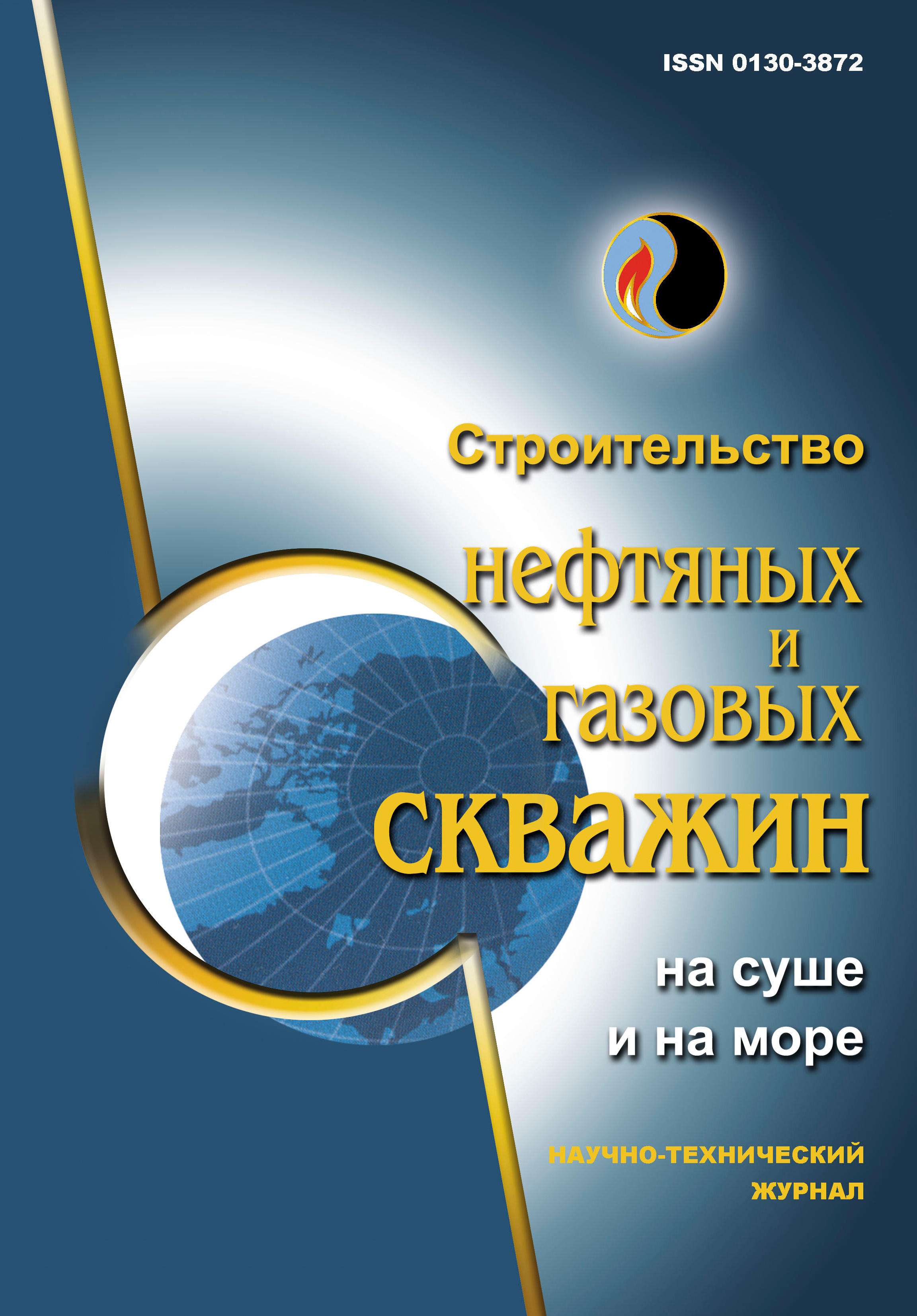The combined use of inhibitors of organic and inorganic types for drilling wells in the intervals of clay rocks occurrence
UDC: 622.24.5
DOI: 10.33285/0130-3872-2022-11(359)-38-42
Authors:
NECHAEVA OLGA A. 1
1,
BOYKO VICTORIA A. 1
1
1 Samara State Technical University, Samara, Russia
Keywords: clay rocks, swelling, wellbore stability, clay hydration inhibitors
Annotation:
Most of the technological complications that arise in the process of drilling a well are associated with the presence of clay deposits in the section. The drilling fluid interaction with clays hales is the main factor affecting the stability of the wellbore walls. The walls Erosion causes the formation of caverns, caving and sliding of unconsolidated loose rocks. In practice, the most used clay inhibitors are salt solutions, in particular, potassium chloride. Its mechanism is based on the penetration of potassium ions into the interlayer space of clays, causing a wedging effect. Such a mechanism makes it possible to prevent the hydration of clays, but leads to the dispersion of clay particles in the solution. As a result, high salt concentrations during long-term exposure lead to destabilization of the well walls. This problem solution requires selecting of a drilling fluid alternative formulation with improved inhibitory properties that ensures the stability of the wellbore during drilling.
Bibliography:
1. Civan F. Reservoir Formation Damage. – 3rd edition. – Gulf Professional Publishing, 2015. – XXIX, 1012 p.
2. Moisture expansion as a deterioration factor for sandstone used in buildings / J. Ruedrich, T. Bartelsen, R. Dohrmann, S. Siegesmund // Environmental Earth Sciences. – 2011. – Vol. 63, Issue 7-8. – P. 1545–1564. – DOI: 10.1007/s12665-010-0767-0
3. An overview on the potential application of ionic liquids in shale stabilization processes / T. Rahman, B.M. Negash, M. Moniruzzaman [et al.] // J. of Natural Gas Science and Engineering. – 2020. – Vol. 81. – DOI: 10.1016/j.jngse.2020.103480
4. Bridzhes K.L. Rukovodstvo dlya supervayzera po burovym rastvoram i ikh ispol'zovaniyu / pod red. V.Yu. Kudryashova, I.B. Ivanishina. – M.-Izhevsk: In-t komp'yuternykh issled., 2018. – 440 s.
5. Kuz'min V.N. Predotvrashchenie gidratatsii i obvala glin // Ekspozitsiya Neft' Gaz. – 2020. – № 1(74). – S. 20–23. – DOI: 10.24411/2076-6785-2019-10066
6. Kozhevnikov R.O., Minibaev V.V., Koshelev V.N. Obespechenie ustoychivosti glinistykh otlozheniy pri burenii razvedochnykh skvazhin // Bulatovskie chteniya. – 2017. – T. 3. – S. 118–121.
7. Shale Hydration Inhibitive Materials as a Solution for the Formation damage: a review / R. Daneshfar, J. Moghadasi, S. Mojtaba Bassir, P. Kamranfar // The Sixth Int. Conf. on Oil, Gas, Refining & Petrochemical, Shiraz, Iran. – 2018.
8. Andreson B.A. Razrabotka i vnedrenie fiziko-khimicheskikh metodov i tekhnologicheskikh protsessov dlya povysheniya effektivnosti bureniya i zakanchivaniya skvazhin v slozhnykh usloviyakh: dis. … d-ra tekhn. nauk: 05.15.10. – Krasnodar, 1999. – 547 s.

